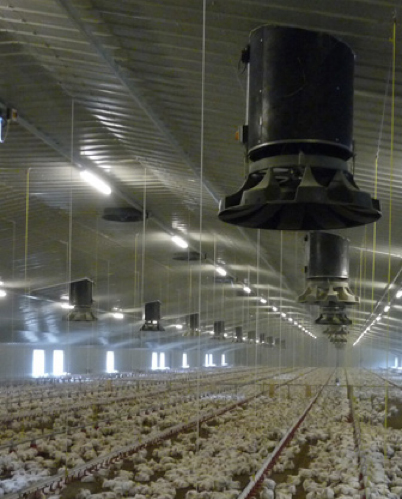Vaccination, an 11 letter word. Larger than many, however, it is a huge subject and justifies its size, given its necessity.
It could be said that in today’s high-paced industry biosecurity and vaccination go hand in hand, alongside production knowledge. It does not really matter which came first, or indeed comes first. Everything is of relative importance.
It is essential that the parent stock arrive at the laying site having been correctly vaccinated against all the required diseases in accordance with the vaccine instructions and titre levels as per the stipulated regulations. Naturally, the birds should also be at the correct weight with the greatest level of uniformity and good conformation.
How to choose the vaccination protocols?
The vaccination protocols will vary depending on the bird type; broiler or commercial egg laying breeder pullets – and the type of vaccine; live virus or oil-based intramuscular. The exact program to be followed should be worked out based on your own knowledge and production experience in conjunction with the company’s veterinarian. This should be based on what is best suited to the production climate type, as well as the available management skills. Several experienced individuals who know the area well should be asked for their opinions as this will provide further valuable information.
Does the climate influence the vaccination program?
Climate can also play a part in deciding the best route to achieve the ideal result:perfection. Housing types, stocking densities, bird weights during peak warm or hot weather, as well as humidity levels throughout the cycle. Whether the housing is a controlled environment, or an open type of housing also needs to be taken into consideration.
In-feed solutions
The program used should give the breeder parents the best possible titre levels. This will ensure that their progeny receive the correct amount of antibodies. As they mature and receive their vaccinations this will give them adequate immunity to be able to overcome any challenges that they may encounter during their life cycle.
A fairly recent innovation to improve vaccination efficiency – especially since the ban on the use of therapeutic antibiotics – is the use of in-feed solutions. Vaccination helps to prevent disease by boosting the chickens’ immune system to produce antibodies. Although relatively new and centred around the inclusion of beta-glucans which modulate the immune system, in-feed solutions prepare the immune system for a response to immunization, which in turn will increase the vaccination efficiency in the bird.
Taken from: https://www.poultryworld.net/Health/Articles/2020/7/Vaccine-efficiency-is-key-in-poultry-production-612369E/

